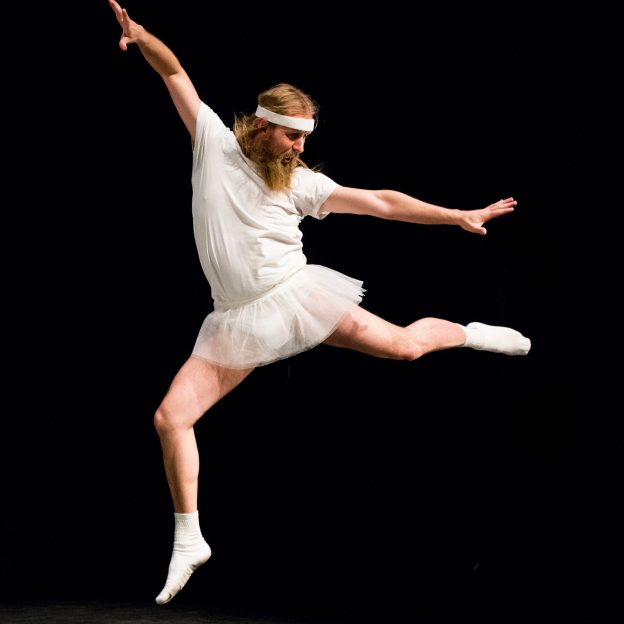As a performer, teacher and lifelong learner of all things clown, Jamie Wood muses on the bon mots of his own clown teachers and his peers
My first clown workshop was in Liverpool when I was twenty. It was with a clown called Gerry Flanagan. I remember a young woman confessing her insecurity around how much her ears stuck out. She was invited to stand up in front of us all and sing about how much she loved her ears. She laughed and cried, and so did the audience. It was hypnotic, hilarious and moving. I had never experienced something so simple yet so complex. A couple of years later, I trained with Philippe Gaulier. I remember each evening sat in the pub with a group of fellow students dissecting each moment, trying to understand the laughter from the day. As a hospital clown I got to travel and learn from a diverse range of teachers. As I started to teach I impersonated my teachers, trying to understand what I was looking for. Slowly I invented exercises and an understanding of what I was tuning into when I taught.
As my teaching has evolved there are some phrases that I repeatedly come back to. I mostly don’t remember where these phrases originated but they seem to articulate something precise and helpful for the student, and have evolved to become phrases I repeat when teaching. I was interested in interrogating these more closely and inviting some other clown teachers to think about them with me.
There were so many clowns I could have reached out to…
I don’t know Jeff Raz but recently I read his book, The Secret Life of Clowns, and I enjoyed the juxtaposition of student and teacher and the varying challenges they meet. I’ve recently met Naomi Silman, physical/visual theatre maker and clown from internationally renowned company Lume Teatro, on the Total Theatre Artists as Writers programme. I listened to an interview with her by Barnaby King, and found her journey from London to Brazil fascinating. I did a workshop with Spymonkey’s Aitor Basauri twelve years ago and loved his generosity and thoughtfulness. Holly Stoppit (aka Holly Stoddart) is a musical clown and performance director who is also is a dramatherapist and facilitator who created a system which she has coined ‘Clown-o-therapy’. The links she finds between clowning and therapy resonate with me. A little while ago I was awarded a Develop Your Creative Practice grant from Arts Council England. I wanted to work with clown teachers from different parts of the world. A friend pointed me towards Pedro Fabião. I worked with him in Portugal: his deep understanding of psychological processes mixed with passion, humility and mischief is inspiring. Deanna Fleysher wrote me a very kind email after she’d seen O No! – my show about Yoko Ono. When I experienced her show Butt Kapinski I was blown away by the combination of play, humanity, intelligence and anarchy.
These are just a few of the many brilliant people working today, and perhaps this is just the beginning of a larger conversation…
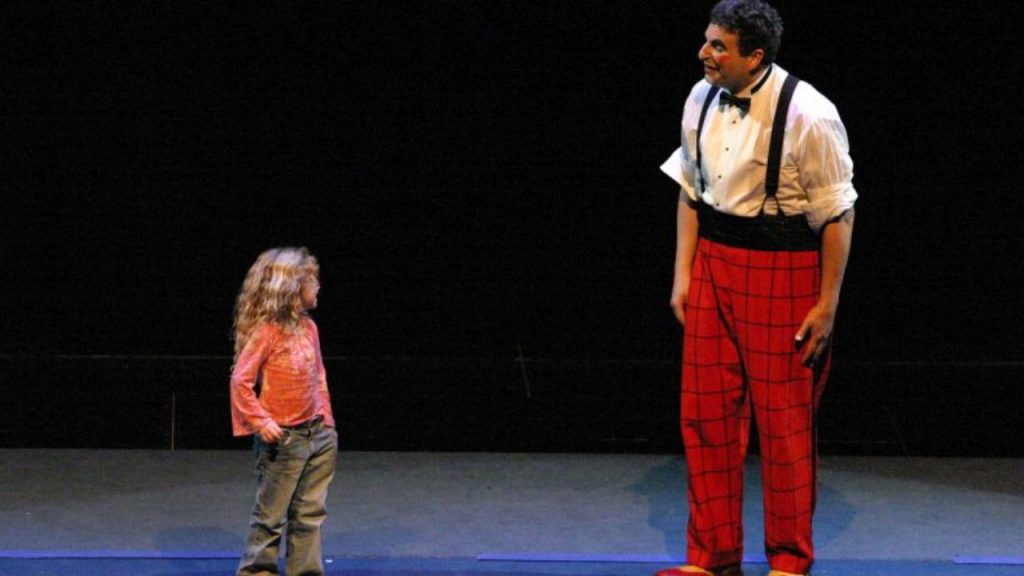
’The Clown is at the top of your intelligence.’ – Sue Morrison
I always credit this quote to Sue Morrison, someone I would love to train with. She was the protégé of Richard Pochinko, chosen to develop his original Clown Through Mask ideas which bring together the diverse elements of Native American and European Clowning. The quote speaks to me of an unlimited potential and permission to be as big as I can imagine. I’ve worked for years as a Giggle Doctor for Theodora Children’s Charity. I remember the feeling of cycling home after a shift and repeating to myself, I want to be more like my hospital clown in everyday life, as brave, as open, as compassionate, as playful. The title ‘clown’ has become an aspiration for me, something I reach towards. And if I fully extend myself to be at the top of my potential, then when I trip and fall, the stakes are high and the laughter is big. The audience is full of empathy for my courage to be vulnerable and expose myself. With that deep connection they are moved, sometimes to laughter, sometimes tears.
Jeff Raz: ‘Something I find crucial as a clown in performance is the need to be 100% focused on the audience, 100% focused on your stage partner(s), 100% focused on technique, 100% focused on the lighting, stage and props. When I’m performing, I have way too much to do, too many 100%’s, which means I need to be in a state that is super-naturally attuned and receptive, what you might call ’at the top of my intelligence’. Over the years, I have found, like many clowns, that putting on make-up, getting in costume and doing my stretching routine is the ritual that gets me to super-natural. More technique is needed to stay super-natural when something goes wrong on stage, what I call creating “golden mistakes”.’
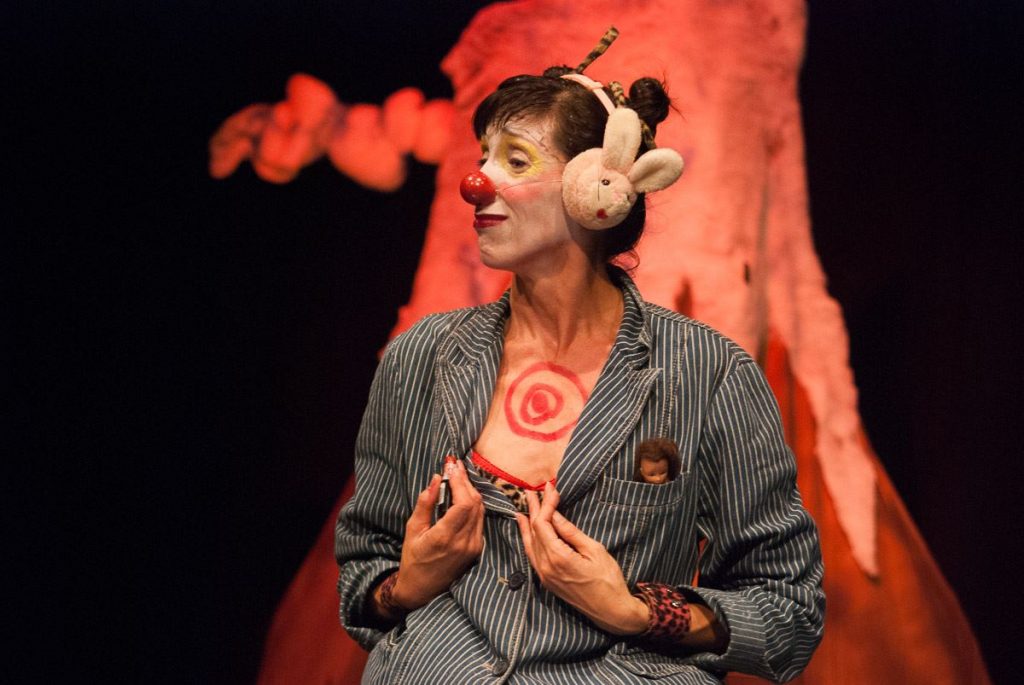
Naomi Silman: ‘Maybe because when we are clowning we use more of our faculties than in everyday life… Not just our rational minds (which often get in the way of a more instinctive intelligence). We engage our bodies, emotions, imagination, senses, impulses, mind and soul in unison. We work to reach and maintain a state where we are 120% present – in the moment, open to anything that might happen, where there is the shortest delay between impulse and action… this enables us to respond to any situation with our own genuine logic and play, that potentialise the conversation with the other. Clowning is also about knowing yourself deeply, and that takes much intelligence and courage…’
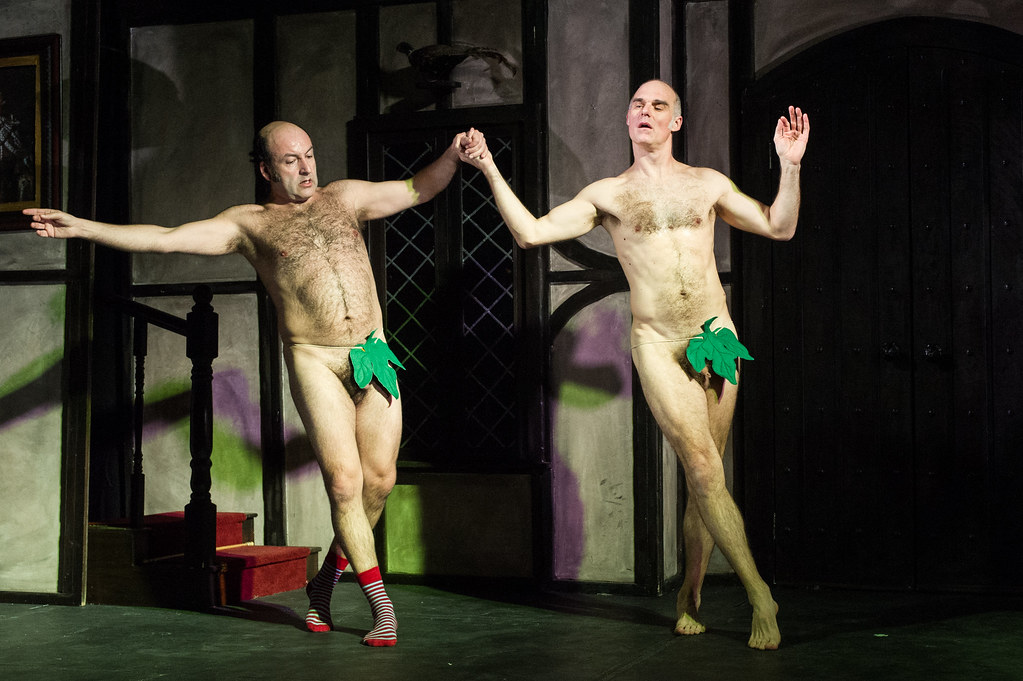
Aitor Basauri: ‘Perhaps this is because like no other character or representation on stage that exists in the theatre, the clown lives above and in the show and it has a sensitivity to navigate all the layers that a performance can have. I say “perhaps” because the clown lives in the world of the unknown; the clown does not know, but he is capable of having a sense of humour about himself and about not knowing. The audience laughs, so the clown thinks it must be good. When I laugh at myself it is good, so if they laugh at me then it must be good. Something challenging to our contemporary society.’
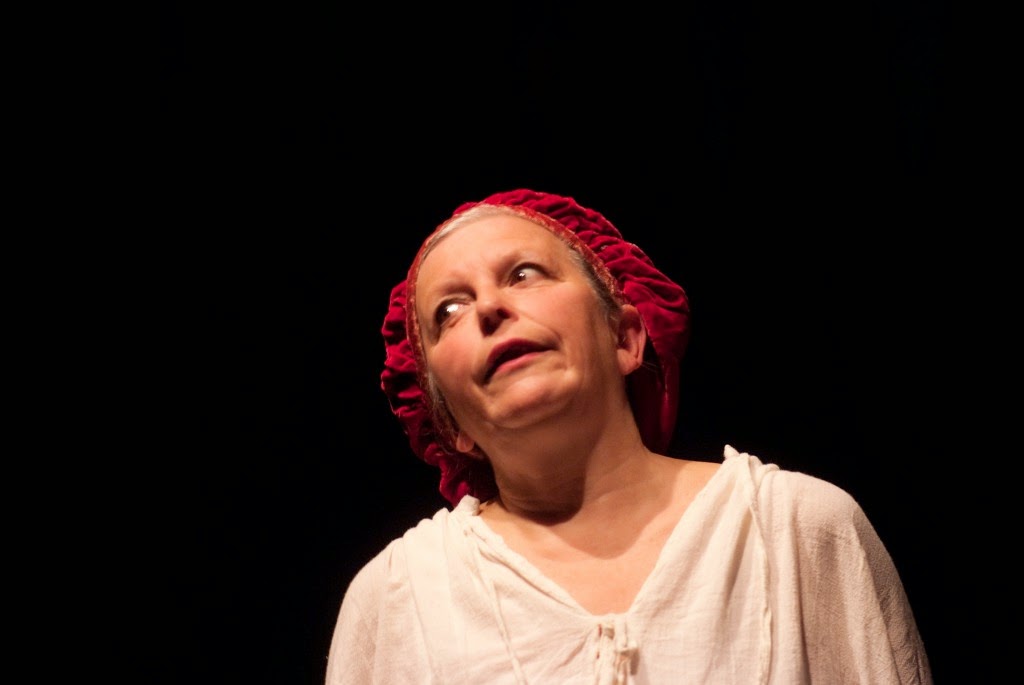
‘If you don’t share what you are feeling with an audience, then the audience will feel all you are not expressing.’ – Franki Anderson
This was a gift when told to me by ‘professional idiot’ Frank Wurzinger. We’d both been teaching neighbouring clown classes at a drama school and were chatting about our experiences on the train home. We were talking about the challenges of teaching clowning, our approaches and the moments, as a teacher, when we have no idea how to help a student. Frank was describing a lesson from one of his former teachers, Franki Anderson, when she’d articulated the idea that the audience will feel all you are not expressing, and how his first question after any improvisation is, did you play with all your feelings? It opened up a whole new language of understanding the relationship between the clown and the audience and the resulting laughter or lack of it.
These days, I think about clowning based on connection, beautifully summed up in the quote by Danish-American comedian Victor Borge: ’Laughter is the shortest distance between two people.’ When the audience feels connected to the clown it is easy for them to laugh because they feel empathy. The laughter can come simply because it is so rare to be in the company of someone so open to being seen. We want to connect to one another. We are relieved and relaxed when we feel connected. Our emotions can move freely inside us. A significant part of the clown’s job is to create connection and give the audience permission to be moved. During training we must learn to accept the laughter that might happen when an audience sees and feels us, even if it feels uncomfortable. I think of connection in relation to flow and ease. There’s nothing getting in the way between people. We allow an audience to feel us and we feel the audience, and everybody breathes. With breath comes emotion which we express through our voice, body, play and imagination.
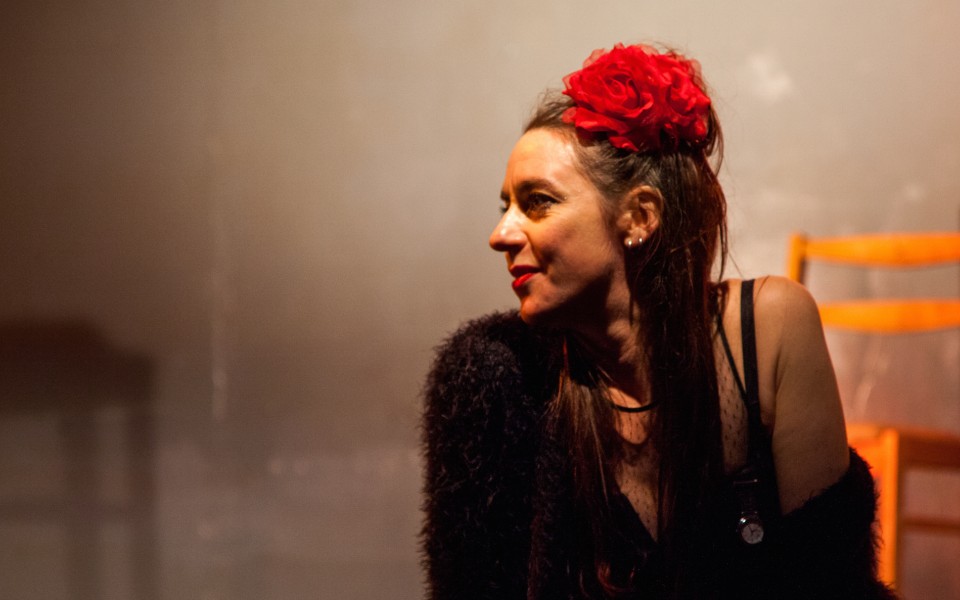
Holly Stoppit: ‘Audiences empathise with performers – it’s impossible not to. We have these mirror neurones in our brains that literally mirror what we see in others. Audiences tune into the performer’s frequency and go along for the emotional ride. Whatever the performer is repressing can be felt by the audience. If it’s not declared by the performer, there is incongruence. When audiences see one thing and feel another, that can cause discomfort and confusion. There is such a stigma around owning and expressing many feelings including fear, shame, sadness and discomfort and sometimes even joy and delight. We have been conditioned to not show these feelings. But the audience can feel them whether you show them or not.’
Naomi Silman: ‘The audience has the same instinctive sense as dogs and babies. They pick up any hidden fears or insecurity on our part and when they perceive this, the connection/conversation is broken. They don’t trust us, because we are not being 100% honest! I like Sue Morrison’s image that as clowns we must turn our skin inside out. I think it is important to reveal our inner being, feelings, fears, desires etc, with integrity/honesty, but also with a sense of fun.’
Pedro Fabião: ‘If you don’t release what you are feeling with an audience, at least once, they will keep those emotions unreleased and suppressed. And often these emotions are too powerful to be comfortable. It feels bad for both clown and audience. That is for me one of the main pillars of what clowning (and theatre) is and what it does. Because of our genetic determination for empathy, the one who is on stage or has the spotlight is deeply affecting those who are watching. That’s why the emotional journeys and transformations of the clown are lived so intensely by the audience. There are clowns who engage more than others with the audience in their journey but any clown number builds a special kind of emotional tension that will be released. This release is emotional, and it happens through laughter, or the expression of different emotions (breath has a key role in this process). This release is what the audience is looking for in performance, because it corresponds to a basic human need. We can also argue that one of the key roles of clowns in human groups since primitive times is to allow everyone to release tension and let emotions move.’
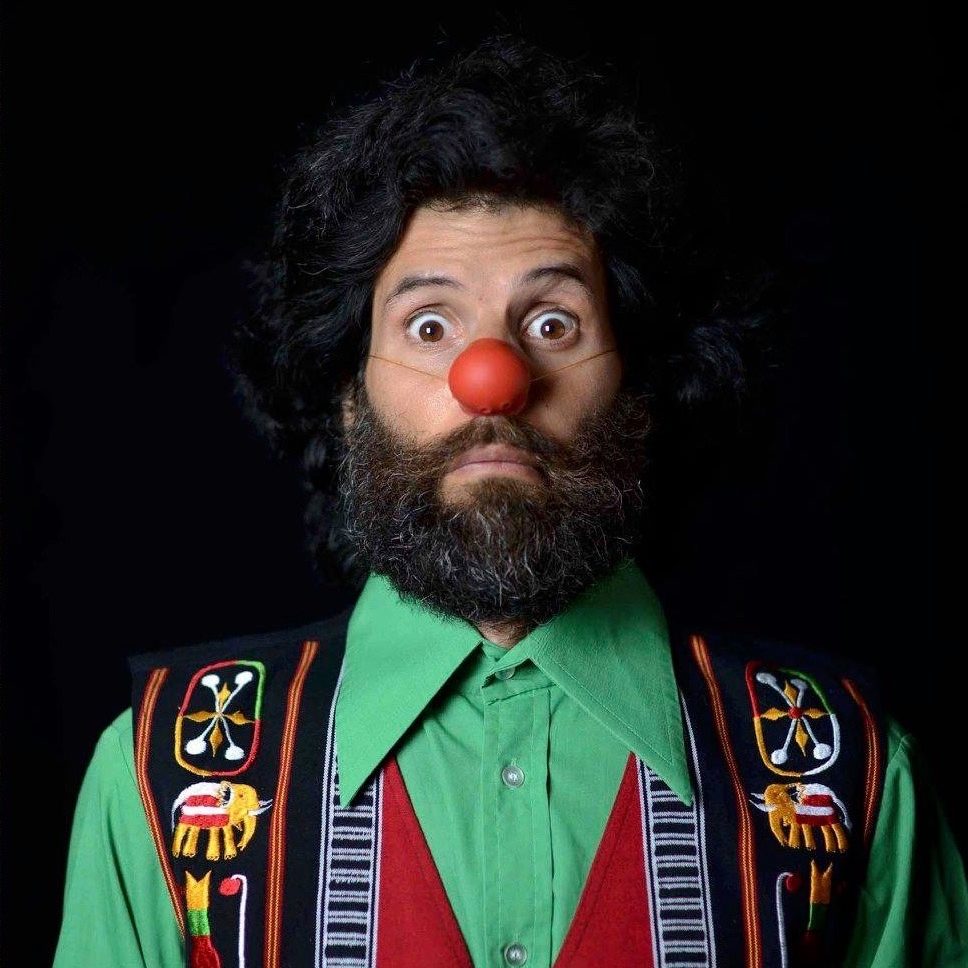
‘Do not be more idiotic than you really are’ – Philippe Gaulier
We often have a powerful old relationship with laughter. Usually I start teaching by asking people to think about their individual relationships to it. Frequently somebody brings up the thought that they don’t mind being laughed ‘with’ when they are being funny but they don’t like being laughed ‘at’. I definitely remember the distinction from my childhood. Now I’m not sure there is a clear difference. I think laughter can contain many feelings including joy, empathy, surprise, as well as cruelty and aggression. When we have been laughed at and we don’t feel like we’ve chosen that reaction, sometimes we feel exposed and vulnerable. We may feel ridiculed, the laughter has made us feel ridiculous or idiotic, and perhaps this is very painful to face. Perhaps we feel idiotic much of our lives but we work incredibly hard to not reveal that to the world. For me, the word ‘clown’ is like a portal which invites people to walk through and accept their own idiocy and ridiculousness and share it with an audience. Potentially, in theory, we love that idea, the invitation to remove the tight shoes of how we’ve learned to be in the world, for a bit.
Unfortunately, unlike a real tight shoe, we often can’t simply remove our way of being with others. First, we have to become aware of our default behaviours before we make the leap and experiment and taste other possibilities of relating. Understandably, this feels incredibly risky and uncomfortable. Consequently, and commonly, people will become ‘more idiotic than they really are’, as if they are distancing themselves from their own ridiculousness and the possible resulting laughter. This may manifest in many different ways including the body, face, voice and imagination. In embodying their perception of someone ‘funny’, the person tells the audience that they ‘should’ laugh, often this is exactly what prevents people from laughing.
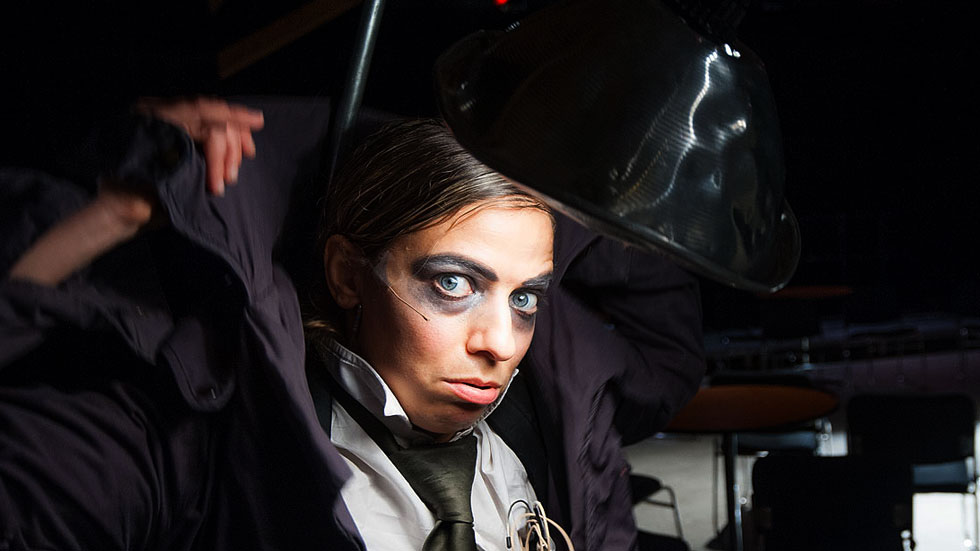
Pedro Fabião: ‘[The trick is] being able to show yourself – having some kind of pleasure in not being in control. This brings about the idiot in you, and not adding too much to this because of insecurity, wanting too much, or having learned to hide true emotions and replacing them with other expressions which are disconnected from what is really going on inside. For many people in clown training we need to encourage them to stay in that fine idiotic balance, not holding back but also not adding too many ideas of how to solve their discomfort.’
Deanna Fleysher: ‘I think there’s a fair bit of clown training that encourages adults to be idiotic children, and I don’t think it’s a good look. There is a way we do want the clown to be “stupid,” to be “an idiot”, but I think it’s important to define what that really means. It doesn’t necessarily mean not being smart. It means being ambitious, but maybe one’s ambitions are a little out of sync with what’s actually possible. That’s dumb, but it’s still relatable dumb. That’s the dumb I strive for.’
Aitor Basauri: (On not being yourself): ’Is it because you can not be yourself? Is it because you think that something that you create can be funnier than the unique genuine person that you are? The quest of the person that wants to entertain an audience as a clown is to find their unique and genuine stupidity, their inner idiotic character. People spend thousands of pounds in psychiatry, zen retreats, etc to find out who they really are. And your clown is that, your unique persona that makes people laugh. The performer in the clown should try to make the journey to find that without judging if it is good or bad and only being led by the laughter of the audience… the subject of the clown’s work is oneself and sometimes to be oneself you have to go a little bit further, only to realise that you went too far. Perhaps we are all idiots, perhaps we were born not knowing anything, and then we are really good clowns, whilst not knowing how. Then we start to know, and we need to prove that we know. The clown does not need to know; the clown is happy being the idiot that he is and no more. ‘Idiot’ being someone who does not know. Not knowing is very often a jewel for a performer so all things that happen on the stage feels like a discovery – and that is fun for the clown and for the audience.’
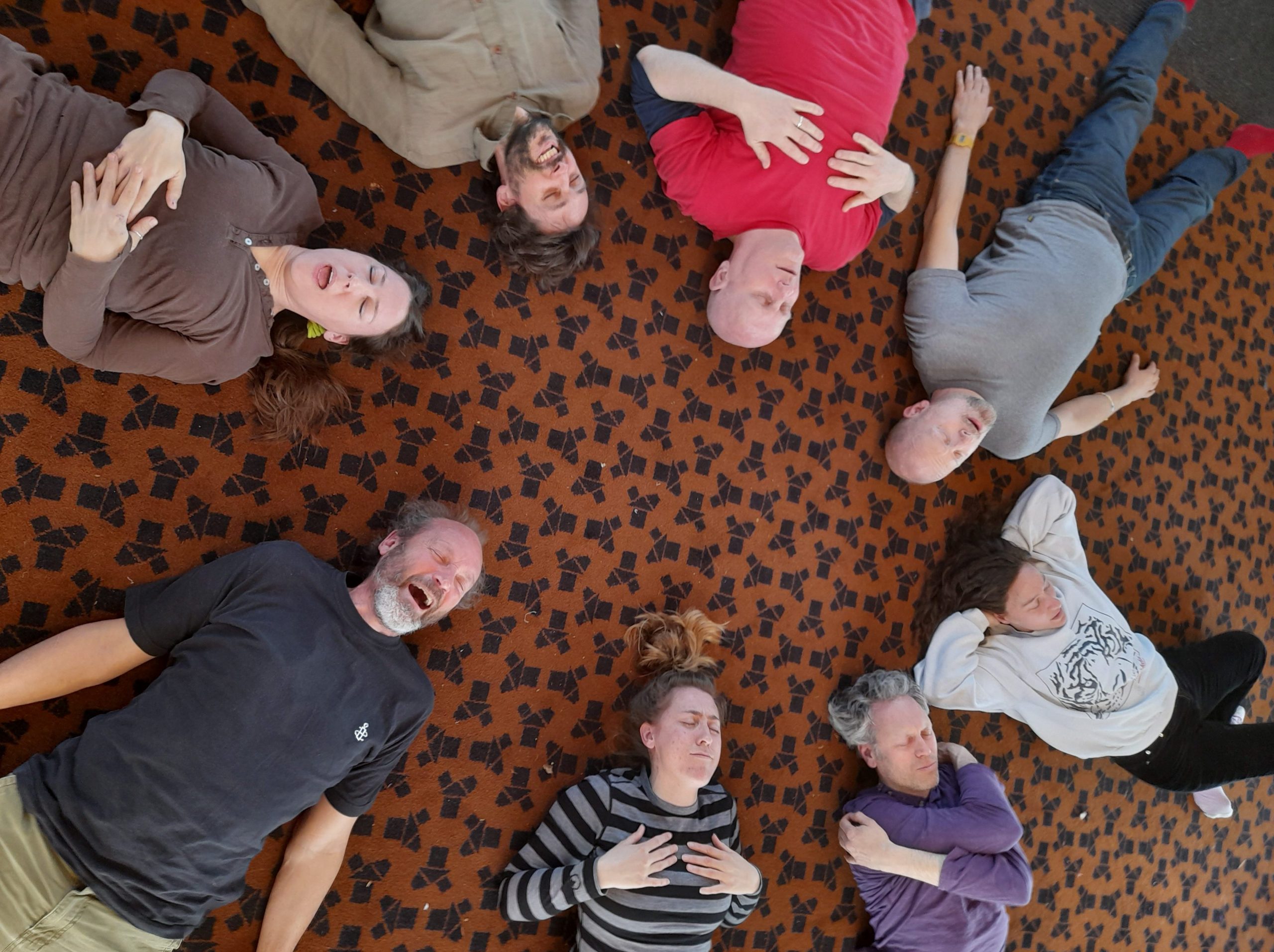
Naomi Silman: Don’t push too hard!. Gaulier often says, ‘you try too much’ or ‘you do too much’. Trying to be funny (or ‘idiotic’ as many people interpret funny to be) is death to the clown. There are so many different ways to be ridiculous/funny – in fact, this is 100% unique in each person – and it’s not about an external idea or showing we are stupid. Showing is different to being. Then, it’s just a stereotype and the power of the clown in their conversation with the other is lost. Clowns are super-intelligent because they know themselves deeply and can tap into this, revealing the ridiculousness inherent to us all. This brings laughter and transformation to others who recognise in themselves their own ridiculousness. But if it’s not genuine, we don’t believe it, and nothing happens.’
I’ve found the process of writing and connecting to my own teaching and reaching out to other clown teachers a moving and illuminating experience.
Part of me realises as I read other teachers’ responses, that I was looking for some validation. Am I doing the right thing? Am I teaching clowning? I love the passion and rigour and attempts to articulate something so ephemeral as connection and laughter. We seem to be looking for our specific language to communicate something we have put many years into trying to understand and finding what speaks to us as individuals. I was touched by people I respect hugely, sharing something of themselves and handing it to me. I end up feeling more connected to myself and them.
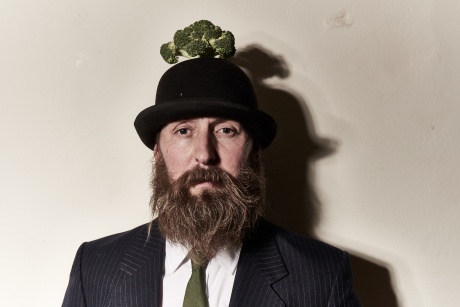
Featured image (top): Jamie Wood in Beating McEnroe. Photo Alex Brenner
International Art Clown Jamie Wood is a performer, director and teacher renowned for creating striking and accessible theatre. His work reflects a training in fine art, theatre, clown and dance. Over the last ten years he has focused on touring his trilogy of critically acclaimed solo shows, Beating McEnroe, O No! and I am a Tree.
Jamie Wood’s interviewees and inspirations:
Gerry Flanagan is a clown, teacher, director and founder of Shifting Sands Theatre. Previously, he performed with many companies including the David Glass Ensemble, Complicite and Bubble Theatre, befor co-founding Commotion Theatre and later Shifting Sands: https://shiftingsandstheatre.co.uk/
Philippe Gaulier founded his renowned school, Ecole Philippe Gaulier, in Paris in 1980. He subsequently moved to London, returning to Paris after 11 years. IN 2020, th school celebrated its 40th anniversary: https://www.ecolephilippegaulier.com/
Jeff Raz has performed nationally and internationally for decades, starring in circuses (Cirque du Soleil, Pickle Family Circus and more) and plays, including Shakespeare’s Comedy of Errors on Broadway. He is a graduate of Dell’Arte International, and he is author of The Secret Life of Clowns: https://secretlifeofclowns.com/
Holly Stoppit (aka Holly Stoddart) completed an MA in Dramatherapy in which her dissertation research focused on the potential therapeutic benefits of clown skills training for adults with mental health issues; a system which she has coined Clown-o-therapy: https://www.hollystoppit.com/
She also devises and creates/directs theatre work under the auspices of Beyond the Ridiculous: https://www.hollystoppit.com/beyond-the-ridiculous
Franki Andersen co-founded FOOLTIME, Britain’s first centre for Circus Skills and Performing Arts in Bristol, and subsequently created The Empty Space Project. See the interview with Holly Stoppit, here: https://www.hollystoppit.com/blog/a-chat-with-angela-de-castro-and-franki-anderson
Naomi Silman is a clown, a physical and visual theatre maker/performer and director, and a core member of Lume Teatro in Brazil: www.lumeteatro.com
Pedro Fabião (Portugal) is an international clown, director, teacher, speaker, psychologist and group specialist: www.pedrofabiao.com
Aitor Basauri (Spain) is a core company member of UK based company Spymonkey and and international clown teacher : www.spymonkey.co.uk
Deanna Fleysher is a comedy artist, teacher and director devoted to fierce vulnerability and interactive comedy magic. She tours the world with her award-winning hit show Butt Kapinski and her popular performance workshops Naked Comedy (Fully Clothed) and Drag King Comedy: dontcallitclown.com

